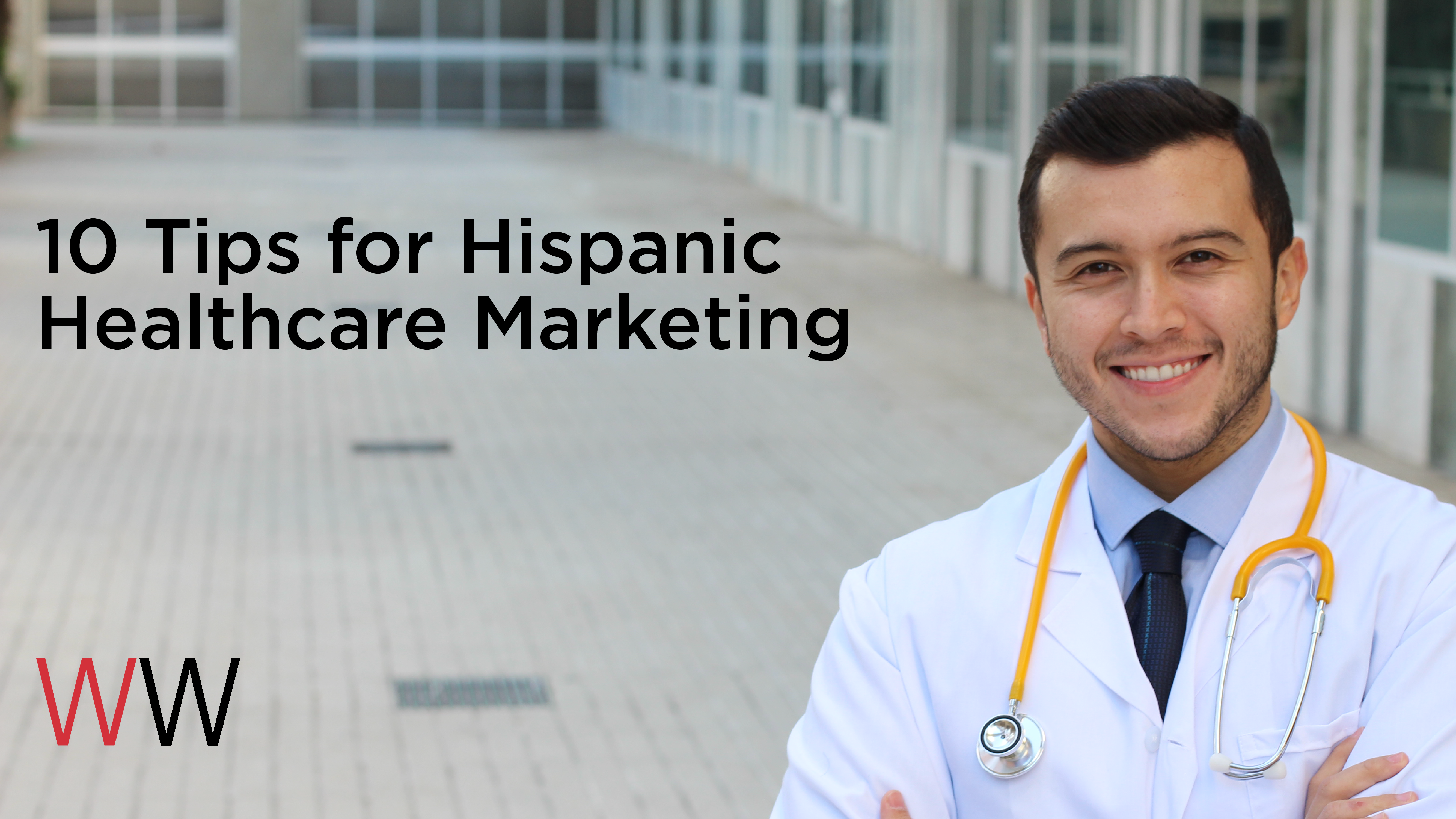By: Glaelis Sierra – Director of Client Services @ Williams Whittle
According to the U.S. Census Bureau, there are 60.5 million Hispanics living in the United States. This group represents 18.5% of the U.S. total population and they account for 52% of all U.S. population growth between 2010 and 2020. In 2019, among Hispanic subgroups, Mexicans ranked as the largest at 61.4 percent. Following this group are: Puerto Ricans (9.6%), Central Americans (9.8%), South Americans (6.4%), and Cubans (3.9%).
As of 2021, states with the largest Hispanic populations are California, Texas, Florida, New York, Arizona and New Mexico. Something worth noting is that in 2019, 30.8% of Hispanics were under the age of 18 in comparison to 18.6% of non-Hispanic whites.
Today, 23.4% of the U.S. millennial population is Hispanic. This is because Hispanics are younger on average than other races and ethnic groups. Considering this trend, for marketers to capture the attention of the Hispanic millennial and Gen Z consumers, one might want to note that although younger Hispanics might speak Spanish in the home, English dominates conversations with peers. Also, Hispanics across all generations, especially those who are older, generally prefer marketing that reflects their culture, as noted in a previous blog post. By 2025, 27% of the U.S. Gen Z population will be Hispanic.
According to a 2019 U.S. Census Bureau report, 70.5% of Hispanics in comparison to 93.3% non-Hispanic whites had a high school diploma or higher. 17.6% of Hispanics in comparison to 36.9% of non-Hispanic whites had a bachelor’s degree or higher. 5.6% of Hispanics held a graduate or advanced professional degree, as compared to 14.3% of the non-Hispanic white population.
When it comes to work and economics, the Census report says that 24.4% of Hispanics work within service occupations, 23.8% work in managerial or professional occupations. Among full-time year-round workers in 2019, the average Hispanic/Latino median household income was $56K in comparison to $72K for non-Hispanic white households.
By the end of 2020, the unemployment rate for Hispanics jumped to 9.3%, according to a report by The New York Times. Before the pandemic, the Hispanic jobless rate was hovering around 4.4%. This group was hit the hardest by the COVID-19 pandemic.
According to a report from the Census, in 2019, the poverty rate for the United States was 10.5%, the lowest since estimates were first released in 1959. However, the poverty rate for Hispanics was 15.7%.
As you can see this group is continuously growing, proportionally disadvantaged, very culturally diverse and young. Nonetheless, when speaking of healthcare marketing there are several things to keep in mind when communicating with Hispanics and Latinos.
A study from The Commonwealth Health Fund found that the uninsured rate for Hispanic adults decreased from 40.2% in 2013 to 24.9% in 2018, after the Affordable Care Act law was passed. However, Hispanic adults continue to report significantly higher uninsured rates than either white or black adults.
When it comes to access to healthcare, a report from HMA Associates says that 27% of Hispanics lack a regular physician. Also, insured Hispanics are more likely to be married, to have been born in the U.S. and to speak English. They are also more likely to have finished high school, to be older than 35 years of age and to have an income above the federal poverty line.
According to Census Bureau projections, the 2020 life expectancy at birth for Hispanics is 82.1 years; 84.2 years for women and 79.9 years for men. For non-Hispanic whites the projected life expectancy is 80.6 years; 82.7 years for women, and 78.4 years for men.
Hispanic household size is larger – the average size of a Latino household is 3.47 people compared to 2.62 for the total population. These households tend to be multi-generational as they have grandparents, cousins, uncles and other family members living under the same roof and children are a big part of these households. Sometimes, the reason why grandparents are living in that household is to take care of their grandchildren while parents work.
HHS and the Office of Minority Health Resource Center inform that Hispanic health is often shaped by factors such as language/cultural barriers, lack of access to preventive care, and the lack of health insurance. The Centers for Disease Control and Prevention has cited some of the leading causes of illness and death among Hispanics, including heart disease, cancer, unintentional injuries (accidents), stroke, and diabetes. Some other health conditions and risk factors that significantly affect Hispanics are asthma, chronic obstructive pulmonary disease, HIV/AIDS, obesity, suicide, and liver disease.
These causes also vary by ethnicity – Puerto Ricans have a low-birth-weight rate that is almost twice that of non-Hispanic whites. Also, Puerto Ricans suffer disproportionately from asthma, HIV/AIDS and infant mortality. Mexican Americans suffer disproportionately from diabetes, according to HHS.
When planning your healthcare marketing strategies for Hispanics or Latinos in the U.S. here are 10 tips to consider:
- Transcreate your campaign. When you design a campaign for a Hispanic audience, you have to ensure your message is culturally relevant and meaningful to that audience. Translating your spot from English to Spanish might not do the trick. You’ll have to keep in mind the cultural nuances for each subgroup and make sure they feel represented. This will depend on the DMA location as well; for example, Hispanics in New York will not look the same as the ones in New Mexico. They will have different cultural backgrounds and, your creative and your messaging need to reflect those nuances. Spanish is not really universal; each country has its own accent and meanings to certain things.
- Family is very important to Hispanics. When addressing this group make sure family values are represented. Also, ensure you show that you honor this value in the most authentic way. They can smell the BS.
- Most Hispanics tend to be raised in a patriarchal family. Yes, there are plenty of single mothers, but the majority see a man as head of the family – whether that is the husband, the father or the grandfather.
- If you have staff that speaks Spanish, that caveat should be upfront in your communications. There’s a sense of confidence when they see that someone speaks their language and they don’t have to struggle with communication. This can include nurses, administrative staff and doctors – if someone speaks the language and can possibly assist or translate for a patient, then it should be mentioned upfront.
- They have high regard for doctor’s advice. So, if your creative will show healthcare staff, make sure it’s a doctor as this is a trusted source for Hispanics.
- Offer resources in Spanish – the brochure, the pamphlet, posters in your office – any written material available in English, have the courtesy of including them in Spanish as well.
- They like deals. If there’s a promo you can extend for the first visit or packages that will make upcoming visits cheaper, communicate that message upfront.
- Hispanics over-index the U.S. total population by 9% for smartphone ownership. They are mobile-first consumers across generations. Therefore, your creative assets and media plan should include a high percentage of mobile ads.
- They are heavy social media users. The top social apps are Facebook, WhatsApp, YouTube and Instagram. So, create content for them too when developing a social media strategy.
- If you’re connecting with a younger audience, don’t shy away from using ‘Spanglish’. Many of these U.S.-born Hispanics grew up listening to their parents speaking Spanish, but they prefer to speak English to their peers and might use ‘Spanglish’ at times.
Overall, the campaign or message needs to reflect the values that are important to them. The key cultural values include –
- Family (familia)
- Authority (doctors are a trusted source)
- Religion (this is considered a very important value in most Hispanic households)
- Respect
- Community (comunidad)
- Customized or interpersonal communications
Lastly, don’t be surprised if they believe their illness was caused by ‘mal de ojo’ (bad eye) or ‘envidia’ (envy). Culturally, Hispanics think that illnesses can be caused because someone looked at you the wrong way with envy. For example, someone might come and say that you have such pretty and long hair with a hint of envy and bam! – that comment can stunt your hair’s growth for years to come. Mind you, hair growth can be impacted by many other things. Also, this may or may not have happened to me.
So, always be empathetic and take the time to review any concerns they may have, as you would with any other patient. And always keep in mind the cultural and language barriers that may have prevented that person from finally going to a doctor’s office.
Healthcare marketing is one of our areas of expertise and as you can see, we’re always looking for insights to make our campaigns relevant for all target audiences alike. Drop us a line to develop a strategy for your healthcare nonprofit.



